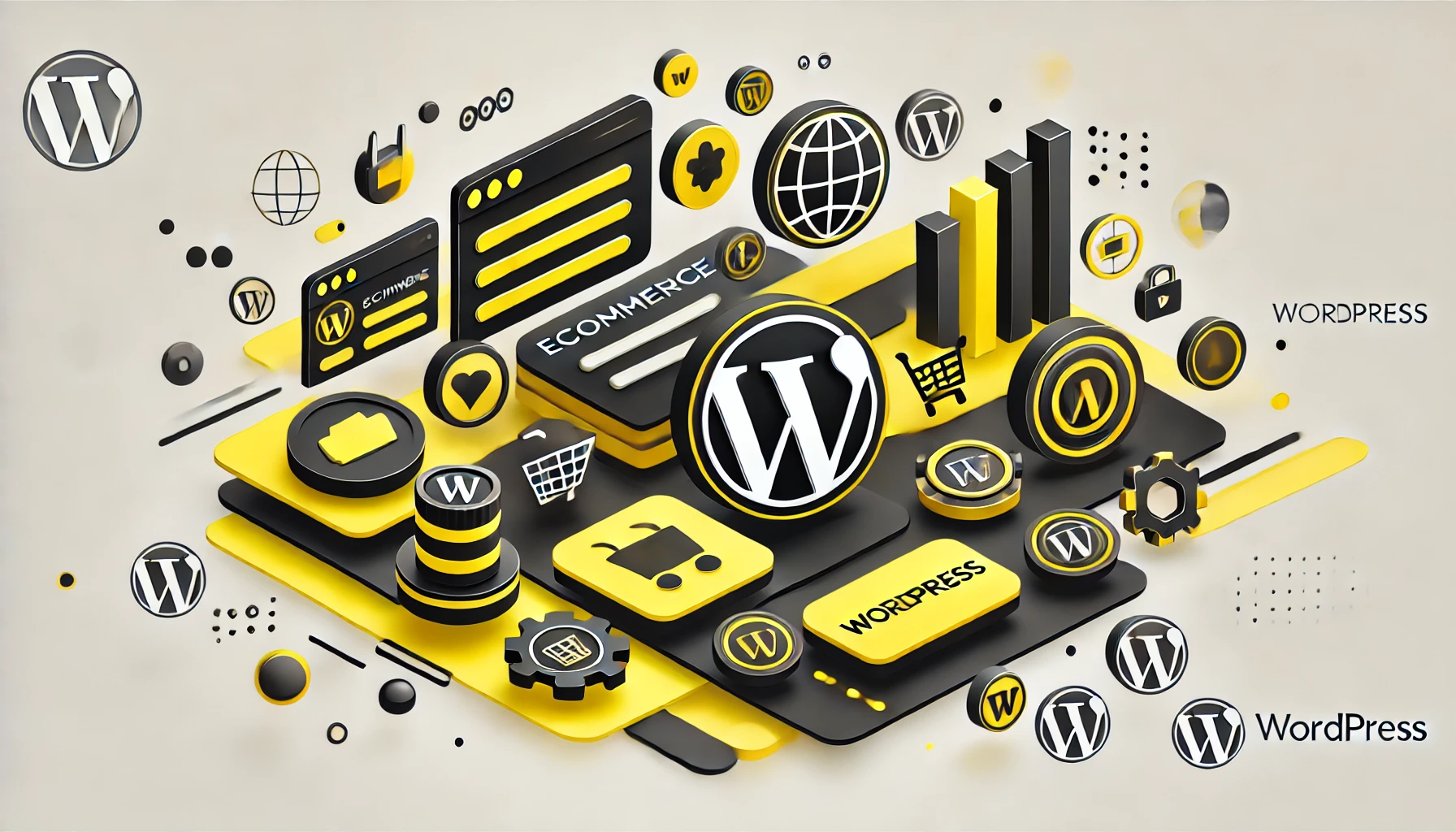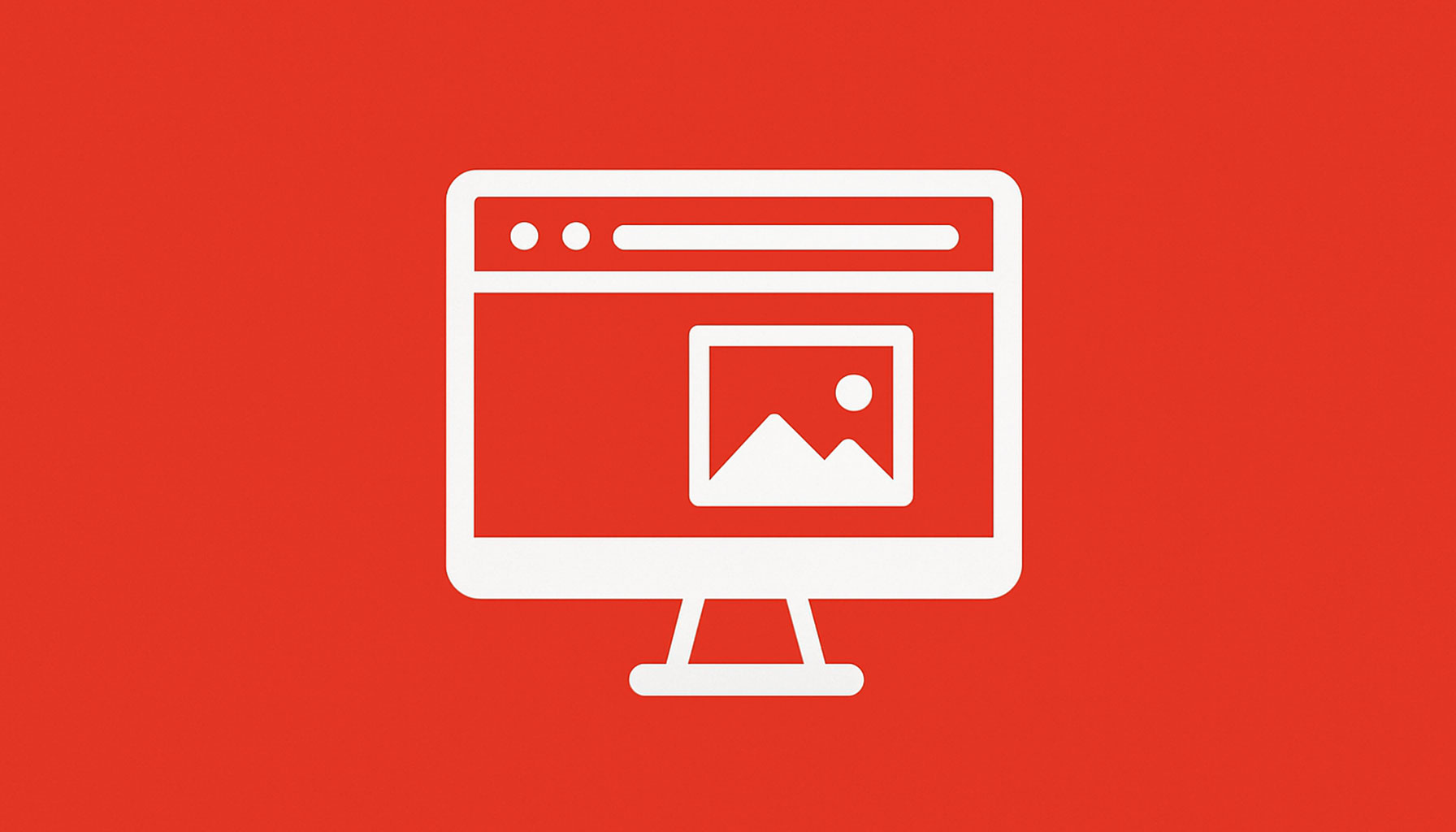Table of Contents
- Introduction
- Importance of B2B eCommerce
- Why Choose WordPress
- Step 1: Domain Registration and Hosting
- Choosing the Right Domain Name
- Selecting a Reliable Hosting Provider
- Step 2: Installing WordPress
- One-Click Installation vs. Manual Installation
- Configuring Basic Settings
- Step 3: Selecting a Suitable Theme
- Features to Look For in a B2B Theme
- Recommended B2B eCommerce Themes
- Step 4: Essential Plugins for Your B2B eCommerce Store
- Overview of Key Plugins
- Recommended Plugins for B2B Functionality
- Inventory Management
- Payment Gateways
- Customer Relationship Management (CRM)
- SEO Optimization
- Security
- Step 5: Setting Up Your Product Catalog
- Adding Products to Your Store
- Organizing Products into Categories
- Managing Product Variations and Attributes
- Step 6: Configuring Payment and Shipping Options
- Setting Up Payment Gateways
- Defining Shipping Methods and Rates
- Step 7: Designing a User-Friendly Shopping Experience
- Enhancing Navigation and Layout
- Creating Compelling Product Pages
- Step 8: Marketing Your B2B eCommerce Store
- SEO Strategies for B2B
- Utilizing Social Media and Email Marketing
- Step 9: Launching Your B2B eCommerce Store
- Pre-Launch Checklist
- Strategies for a Successful Launch
- Step 10: Post-Launch Optimization and Maintenance
- Monitoring Performance with Analytics
- Continuous Improvement Strategies
- Conclusion
- Recap and Final Thoughts
- Encouragement to Start Building Your Store
Introduction
Importance of B2B eCommerce
The rise of digital transformation has profoundly impacted the B2B sector, with eCommerce becoming an essential avenue for businesses to reach clients. Unlike traditional B2C eCommerce, B2B transactions often involve larger quantities, longer sales cycles, and a more complex decision-making process.
With businesses increasingly preferring the convenience of online shopping, having a robust B2B eCommerce platform is no longer optional; it is a necessity.
Studies show that a significant portion of B2B buyers prefer to research products and make purchases online, emphasizing the need for companies to establish a strong online presence. Moreover, eCommerce provides a seamless way to streamline purchasing processes, offer customized solutions, and reach a wider audience than traditional methods.
In this context, having a user-friendly and functional eCommerce platform is crucial for building strong relationships with clients, improving customer satisfaction, and driving sales growth.
Why Choose WordPress
WordPress is a powerful platform that effectively supports B2B eCommerce operations. It powers over 40% of the internet and offers a range of features suitable for various business needs. Here are some reasons to choose WordPress for your B2B eCommerce store:
- User-Friendly: WordPress’s intuitive interface makes it easy for anyone to create and manage a website, even without technical expertise.
- Scalability: WordPress can easily grow with your business. Whether you’re starting small or looking to expand rapidly, WordPress can handle your increasing needs.
- Customizable: With thousands of themes and plugins available, you can tailor your site to match your brand and functionality requirements.
- Strong Community Support: WordPress has a vast community of developers and users, providing support, tutorials, and resources to help you succeed.
- SEO-Friendly: Built with SEO in mind, WordPress offers features that make it easier to optimize your site for search engines, helping you attract more organic traffic.
Step 1: Domain Registration and Hosting
Choosing the Right Domain Name
Your domain name is your online identity, so it’s crucial to choose one that reflects your brand. A good domain name can enhance your credibility and make it easier for customers to find you online. Here are some tips for choosing the right domain name:
- Keep It Short and Memorable: A shorter domain name is easier to remember and type. Aim for a name that can be easily recalled and pronounced.
- Use Keywords: If possible, incorporate relevant keywords related to your business. This can help with search engine rankings and provide an idea of what your site is about.
- Avoid Special Characters and Numbers: Special characters can lead to confusion, and numbers can be misremembered (e.g., is it “5” or “five”?).
- Check for Availability: Use domain registration services to check if your desired domain is available. If it’s taken, consider variations or alternative extensions like .net or .co.
Selecting a Reliable Hosting Provider
A reliable hosting provider is vital for the performance and security of your B2B eCommerce store. The choice of hosting can significantly impact your website’s speed, uptime, and customer experience. Look for hosts that offer:
- Fast Loading Speeds: Customers expect websites to load quickly. Choose a host with solid performance metrics to ensure your site runs smoothly.
- Excellent Customer Support: In case of technical issues, having access to responsive customer support can save you time and prevent downtime.
- Security Features: Look for hosting providers that offer SSL certificates, DDoS protection, and regular backups to keep your data secure.
- Scalability Options: As your business grows, you may need more resources. Opt for a hosting provider that allows you to easily upgrade your plan without hassle.
Some popular hosting providers for WordPress include:
- SiteGround: Known for exceptional customer support and performance.
- Bluehost: Officially recommended by WordPress, offering one-click installations.
- WP Engine: A premium managed WordPress hosting service with excellent performance.
Step 2: Installing WordPress
One-Click Installation vs. Manual Installation
Most hosting providers offer one-click WordPress installation, making it easy for beginners. This method eliminates the need for downloading and configuring files manually. Here’s a simple overview of both methods:
- One-Click Installation:
- Log into your hosting account.
- Navigate to the control panel.
- Find the WordPress installer and follow the prompts to complete the setup.
- Manual Installation:
- Download WordPress from the official website.
- Upload the files to your server using FTP (File Transfer Protocol).
- Create a MySQL database for WordPress and configure the
wp-config.phpfile. - Complete the installation by visiting your domain and following the on-screen instructions.
Configuring Basic Settings
Once installed, you’ll need to configure basic settings, including:
- Site Title and Tagline: Set your site title and tagline under “Settings” > “General.” This information appears in search results and on your site.
- Timezone and Date Format: Adjust the timezone to match your location, ensuring your posts and transactions reflect accurate timing.
- Permalink Structure for SEO: Go to “Settings” > “Permalinks” and select a structure that includes keywords, such as “Post name.” This helps improve SEO by making URLs more readable.
- Reading Settings: Choose whether to display your latest posts or a static page as your homepage. For a B2B site, a static homepage might be preferable to showcase products or services.
Step 3: Selecting a Suitable Theme
Features to Look For in a B2B Theme
Choosing the right theme is crucial, as it affects your site’s design and functionality. For B2B eCommerce, look for themes that offer:
- Responsive Design: Your theme should be mobile-friendly to provide a seamless experience across all devices.
- Customization Options: Look for themes that allow you to easily customize colors, fonts, and layouts to match your brand.
- Built-in eCommerce Features: A good B2B theme should support WooCommerce integration and include features like product galleries, shopping carts, and checkout pages.
- SEO Optimization: Themes that are coded with SEO best practices in mind can help your site rank better in search engines.
- Support and Updates: Choose a theme that is regularly updated and supported by its developers to ensure compatibility with the latest WordPress version.
Recommended B2B eCommerce Themes
Some popular WordPress themes for B2B eCommerce include:
- Flatsome: A highly customizable and responsive theme that is suitable for eCommerce. It features a built-in page builder and offers numerous demo layouts.
- Shopkeeper: This theme is perfect for showcasing products with a professional look. It comes with various demos and features that cater specifically to eCommerce.
- Porto: Versatile and highly customizable, Porto offers multiple demos tailored for B2B and eCommerce businesses, ensuring that you can find a design that suits your needs.
- Astra: A lightweight and fast theme that integrates seamlessly with WooCommerce. Astra offers numerous customization options and pre-built templates for various industries.
Step 4: Essential Plugins for Your B2B eCommerce Store
Overview of Key Plugins
Plugins extend the functionality of your WordPress site. For a B2B eCommerce store, consider the following categories of plugins:
- Inventory Management: Manage stock levels, track sales, and handle orders efficiently.
- Payment Gateways: Integrate multiple payment options for customers.
- Customer Relationship Management (CRM): Manage customer interactions and data.
- SEO Optimization: Improve your site’s visibility on search engines.
- Security: Protect your site from threats and vulnerabilities.
Recommended Plugins for B2B Functionality
- WooCommerce: The most popular eCommerce plugin for WordPress, enabling you to sell anything easily. It provides a wide range of features, including inventory management, payment options, and shipping settings.
- WooCommerce Wholesale Suite: Ideal for managing wholesale pricing and customer groups, this plugin allows you to offer exclusive pricing to B2B clients.
- WPForms: For creating custom forms, including quotes and inquiries. This user-friendly form builder allows you to create contact forms, surveys, and more.
- Yoast SEO: A comprehensive SEO plugin that helps you optimize your site for search engines by providing real-time feedback on your content, managing meta descriptions, and generating XML sitemaps.
- Sucuri Security: To ensure the security of your website, Sucuri offers features like malware scanning, firewall protection, and security auditing.
- OptinMonster: A powerful lead generation plugin that helps you convert visitors into subscribers and customers through customizable pop-ups and forms.
- Mailchimp for WooCommerce: This integration allows you to sync your WooCommerce customer data with Mailchimp, enabling effective email marketing campaigns.
Step 5: Setting Up Your Product Catalog
Adding Products to Your Store
Using WooCommerce, you can easily add products to your store. For each product, include:
- Title: Choose a clear and descriptive title.
- Description: Write detailed descriptions highlighting features and benefits. Use bullet points for readability.
- Images: Use high-quality images that showcase the product from different angles. Images should be optimized for fast loading without losing quality.
- Pricing: Set the price clearly. Consider offering bulk pricing or discounts for B2B customers.
- SKU (Stock Keeping Unit): Assign SKUs to track inventory efficiently.
To add a product:
- Navigate to the “Products” section in your WordPress dashboard.
- Click “Add New” and fill in the necessary details.
- Publish the product to make it live on your store.
Organizing Products into Categories
Create categories to help customers navigate your store. Organizing products makes it easier for users to find what they need. Categories also enhance SEO by structuring your content. To add categories:
- Go to “Products” > “Categories” in your dashboard.
- Create relevant categories and subcategories based on your product offerings.
Managing Product Variations and Attributes
For products with variations (like sizes or colors), ensure you set them up correctly in WooCommerce. This will help customers choose the specific product they want. To add variations:
- While adding or editing a product, navigate to the “Product Data” section.
- Select “Variable Product” from the dropdown.
- Define the attributes (e.g., size, color) and variations accordingly.
Step 6: Configuring Payment and Shipping Options
Setting Up Payment Gateways
Offering multiple payment options caters to different customer preferences. Popular choices include:
- PayPal: A widely recognized payment method that offers secure transactions.
- Stripe: Supports credit card payments directly on your site, providing a seamless checkout experience.
- Authorize.net: A popular choice for businesses looking for secure online payment solutions.
To set up payment gateways in WooCommerce:
- Go to “WooCommerce” > “Settings” and navigate to the “Payments” tab.
- Enable your chosen payment gateways and configure their settings as per your requirements.
Defining Shipping Methods and Rates
Set up shipping methods and rates based on your business model. Consider offering:
- Free Shipping: Offer free shipping for orders above a certain amount to encourage larger purchases.
- Flat-Rate Shipping: Charge a fixed rate for shipping, regardless of order size or weight.
- Real-Time Carrier Rates: Integrate with shipping carriers like UPS or FedEx to provide real-time shipping rates based on the customer’s location and order size.
To configure shipping options:
- Go to “WooCommerce” > “Settings” and navigate to the “Shipping” tab.
- Set up shipping zones, methods, and rates based on your target markets.
Step 7: Designing a User-Friendly Shopping Experience
Enhancing Navigation and Layout
A well-structured layout is crucial for a positive shopping experience. Use clear menus and categories to guide users through your store. Ensure that your navigation is intuitive, allowing customers to easily find what they are looking for.
- Use Mega Menus: For larger inventories, consider using mega menus that allow you to showcase multiple categories at once, improving accessibility.
- Breadcrumb Navigation: Implement breadcrumb navigation to help users understand their current location on your site and easily return to previous pages.
Creating Compelling Product Pages
Ensure product pages are informative and visually appealing. Include high-quality images, detailed descriptions, customer reviews, and clear calls to action (CTAs). Here are some best practices for creating compelling product pages:
- High-Quality Images: Use multiple images for each product, showing different angles and usage contexts.
- Detailed Descriptions: Write descriptions that cover features, specifications, and benefits. Highlight what sets your product apart.
- Customer Reviews: Enable customer reviews to build trust and provide social proof. Encourage customers to leave feedback.
- Clear CTAs: Use clear and compelling CTAs like “Add to Cart” or “Request a Quote” to guide customers towards taking action.
- Related Products: Showcase related products on each product page to encourage additional purchases.
Step 8: Marketing Your B2B eCommerce Store
SEO Strategies for B2B
Optimizing your store for search engines is crucial for attracting organic traffic. Here are some SEO strategies specific to B2B eCommerce:
- Keyword Research: Identify relevant keywords that your target audience is searching for. Use tools like Google Keyword Planner or SEMrush to find popular search terms.
- On-Page SEO: Optimize product pages, category pages, and blog posts with targeted keywords. Include keywords in titles, meta descriptions, headers, and throughout the content.
- Content Marketing: Create valuable content that addresses the pain points of your target audience. Consider writing blog posts, guides, and case studies related to your products or industry.
- Building Backlinks: Reach out to industry blogs, influencers, and partners for guest blogging opportunities or collaborations to build high-quality backlinks to your site.
Utilizing Social Media and Email Marketing
Leverage social media platforms to engage with your audience. LinkedIn, Twitter, and Facebook are excellent channels for B2B marketing. Here’s how to utilize them effectively:
- Create Engaging Content: Share industry news, product updates, and valuable content that resonates with your audience.
- Participate in Groups: Join relevant industry groups on platforms like LinkedIn to connect with potential clients and showcase your expertise.
- Email Marketing: Build an email list by offering valuable content in exchange for contact information. Use email marketing tools like Mailchimp or Sendinblue to automate campaigns, send newsletters, and promote special offers.
- Nurture Leads: Use email marketing to nurture leads through personalized communication, follow-ups, and targeted offers based on their behavior.
Step 9: Launching Your B2B eCommerce Store
Pre-Launch Checklist
Before launching, ensure that you:
- Test All Functionalities: Test the entire purchasing process, including product selection, cart functionality, payment processing, and shipping calculations.
- Optimize for SEO: Ensure that all pages are optimized for search engines, including metadata, alt tags for images, and keyword placement.
- Set Up Google Analytics: Create a Google Analytics account and link it to your website to track user behavior, conversions, and traffic sources.
- Create Backup: Back up your website to prevent data loss during the launch process.
Strategies for a Successful Launch
Create excitement around your launch with the following strategies:
- Special Promotions: Consider offering exclusive discounts or limited-time promotions to attract customers to your store during the launch.
- Social Media Announcements: Use your social media channels to announce the launch and build anticipation. Create visually appealing graphics and videos to promote your store.
- Email Campaigns: Send an announcement email to your subscribers, highlighting your product offerings and any special promotions available during the launch.
- Influencer Collaborations: Partner with industry influencers to promote your store and reach a wider audience.
Step 10: Post-Launch Optimization and Maintenance
Monitoring Performance with Analytics
After launch, monitoring your store’s performance is critical for ongoing success. Use Google Analytics to track key metrics such as:
- Traffic Sources: Understand where your visitors are coming from, whether organic search, social media, or referral traffic.
- User Behavior: Analyze how users navigate your site, what pages they visit, and where they drop off.
- Conversion Rates: Track how many visitors complete a purchase and identify potential barriers in the buying process.
- Bounce Rates: Monitor bounce rates to identify pages that may need improvement.
Continuous Improvement Strategies
Use customer feedback and analytics data to make improvements to your site. Regularly update content, optimize SEO, and adjust marketing strategies as needed. Here are some ways to continuously improve your B2B eCommerce store:
- A/B Testing: Conduct A/B testing on product pages, CTAs, and email campaigns to determine what works best for your audience.
- Gather Customer Feedback: Encourage customers to provide feedback on their shopping experience. Use surveys or follow-up emails to gather insights.
- Stay Updated on Industry Trends: Keep an eye on industry trends and changes in customer behavior to stay competitive and adapt your strategies accordingly.
- Update Inventory Regularly: Regularly assess your inventory and add new products based on customer demand and market trends.
Conclusion
Creating a successful B2B eCommerce store on WordPress requires careful planning, the right tools, and continuous optimization. By following these ten steps, you can build a robust eCommerce platform that meets the needs of your business clients while providing a seamless shopping experience. Stay committed to enhancing your store and adapting to changing market dynamics to achieve long-term success.
FAQs
- What is the best platform for B2B eCommerce?
- WordPress, combined with WooCommerce, is a powerful and flexible solution for B2B eCommerce, offering a range of plugins and customization options.
- How do I choose the right payment gateway?
- Consider factors like transaction fees, supported currencies, integration options, and customer preferences when selecting a payment gateway.
- What features should I prioritize for a B2B eCommerce site?
- Focus on features like inventory management, multiple payment options, customer segmentation, and robust reporting tools.
- How can I improve my B2B eCommerce site’s SEO?
- Conduct keyword research, optimize on-page elements, create valuable content, and build backlinks to enhance your site’s visibility.
- What are the benefits of using WooCommerce for B2B?
- WooCommerce offers extensive customization options, a large plugin ecosystem, and a user-friendly interface tailored for eCommerce needs.
- Is WordPress secure for eCommerce?
- With proper security measures, such as using security plugins and keeping your site updated, WordPress can be secure for eCommerce.
- How can I effectively market my B2B eCommerce store?
- Utilize SEO, social media marketing, email campaigns, and content marketing to reach your target audience effectively.
- What analytics tools should I use for my eCommerce store?
- Google Analytics is a robust tool for tracking website performance, user behavior, and conversion rates.
- How can I enhance customer engagement on my site?
- Use personalized content, customer reviews, and engaging email marketing to enhance customer engagement.
- What should I do if my eCommerce store isn’t performing well?
- Analyze your analytics data, gather customer feedback, and make necessary adjustments to improve your site’s performance and user experience.





